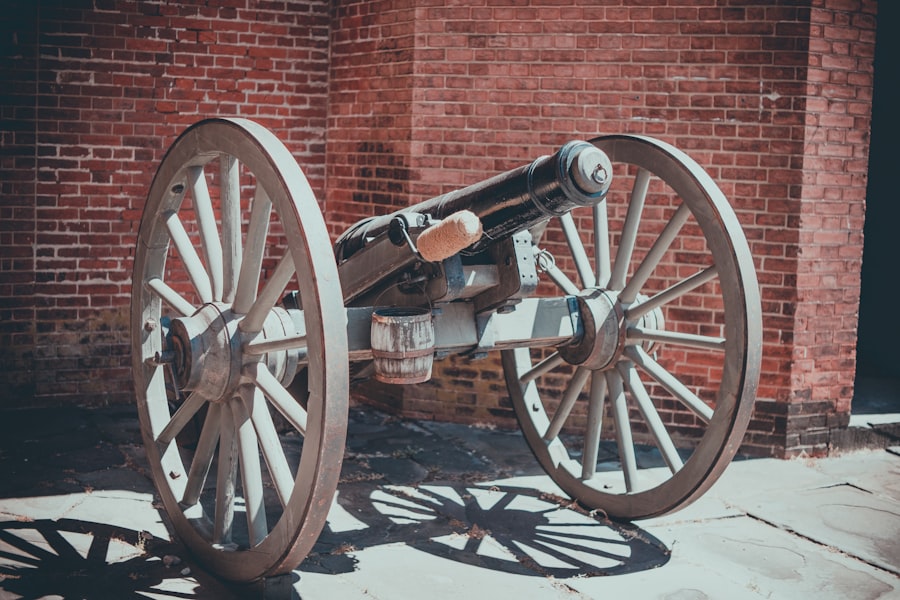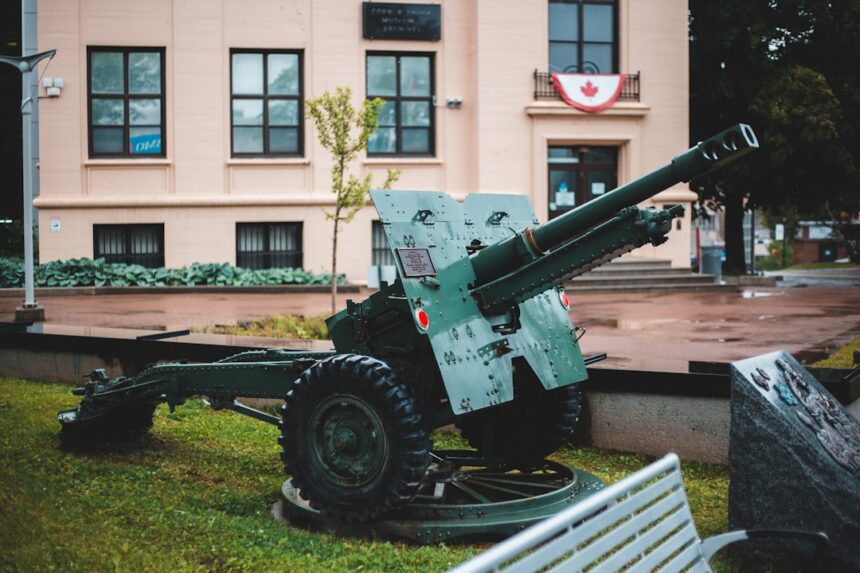The Hussite movement emerged in the early 15th century, rooted in the teachings of Jan Hus, a Czech priest and reformer who challenged the Catholic Church’s practices. His execution in 1415 ignited a fervent response among his followers, who sought to reform the church and society. This burgeoning movement quickly transformed into a revolutionary force, as the Hussites rallied against both ecclesiastical and secular authorities.
The Hussite Wars, which spanned from 1419 to 1434, marked a significant shift in the landscape of medieval warfare, as they introduced innovative tactics and technologies that would redefine combat. The Hussites were not merely a religious faction; they were a formidable military force that utilized their unique beliefs to galvanize support among the populace. Their emphasis on communal ownership and social justice resonated with the peasantry, allowing them to amass a diverse army composed of various social classes.
This unity was crucial in their fight against the established powers, as they employed both traditional and novel strategies to achieve their objectives. The rise of the Hussites signified not only a challenge to the status quo but also heralded a new era in warfare, characterized by the integration of gunpowder technology and innovative military tactics.
Key Takeaways
- The Hussite Revolution marked a new era in warfare with the rise of gunpowder weapons and innovative tactics.
- Hussite gunpowder weapons had a significant impact on medieval warfare, changing the dynamics of battles and sieges.
- Artillery played a crucial role in the Hussite Revolution, providing the army with firepower and strategic advantage.
- The development of Hussite gunpowder technology led to the creation of advanced and effective weapons for the time.
- The Hussite army employed unique tactics and strategies, including the use of mobile artillery and innovative formations.
The Impact of Hussite Gunpowder Weapons on Medieval Warfare
The introduction of gunpowder weapons by the Hussites had a profound impact on medieval warfare, fundamentally altering the dynamics of battle.
However, the Hussites recognized the potential of gunpowder as a game-changer on the battlefield.
They effectively integrated hand cannons and early artillery into their military strategy, which allowed them to engage enemies from a distance and disrupt traditional formations. The Hussite use of gunpowder weapons not only enhanced their offensive capabilities but also instilled fear in their adversaries. The psychological impact of cannon fire and gunpowder explosions was significant, as it challenged the conventional notions of bravery and honor associated with close combat.
This shift in warfare dynamics forced opposing armies to adapt their strategies, leading to an evolution in military tactics across Europe. The Hussites’ innovative approach to warfare set a precedent that would influence future conflicts, as armies began to recognize the importance of incorporating gunpowder technology into their arsenals.
The Role of Artillery in the Hussite Revolution

Artillery played a pivotal role in the success of the Hussite Revolution, serving as both a tool of destruction and a means of psychological warfare. The Hussites were among the first to effectively utilize large-caliber cannons and field artillery in battle, which allowed them to breach fortified positions and engage enemy forces with unprecedented firepower. Their ability to deploy artillery effectively transformed the nature of sieges and open-field battles alike, giving them a distinct advantage over their opponents.
Moreover, the Hussite’s strategic use of artillery was complemented by their innovative tactics. They often employed mobile artillery units that could be repositioned quickly on the battlefield, allowing them to respond dynamically to changing circumstances. This adaptability was crucial during engagements such as the Battle of Vítkov Hill, where Hussite forces successfully repelled larger enemy armies through superior artillery placement and coordination.
The integration of artillery into their military strategy not only showcased the effectiveness of gunpowder technology but also highlighted the importance of flexibility and innovation in warfare.
The Development of Hussite Gunpowder Technology
| Gunpowder Technology | Development |
|---|---|
| Introduction of gunpowder | 14th century |
| Use of gunpowder in firearms | 15th century |
| Hussite Wars | 15th century |
| Development of portable firearms | 15th century |
| Impact on warfare | Significant |
The development of gunpowder technology within the Hussite movement was marked by experimentation and adaptation. As they sought to enhance their military capabilities, Hussite engineers and craftsmen began to refine existing gunpowder weapons while also creating new designs tailored to their specific needs. This period saw advancements in the construction of hand cannons, bombards, and other artillery pieces that would become integral to their military operations.
One notable innovation was the creation of larger cannons capable of firing explosive projectiles over greater distances. These advancements not only increased the destructive potential of Hussite artillery but also allowed for more effective siege tactics against fortified cities. The Hussites’ commitment to improving their gunpowder technology demonstrated their understanding of the evolving nature of warfare and their willingness to embrace change in pursuit of victory.
This relentless pursuit of innovation laid the groundwork for future developments in military technology across Europe.
The Tactics and Strategies of the Hussite Army
The tactics employed by the Hussite army were characterized by a combination of mobility, defensive formations, and innovative use of terrain. One of their most famous strategies was the “wagenburg,” or wagon fort, which involved creating a fortified position using wagons arranged in a defensive formation. This tactic allowed them to protect their troops while providing a platform for artillery fire against advancing enemies.
The wagenburg became synonymous with Hussite warfare and exemplified their ability to adapt traditional methods to suit their unique circumstances. In addition to defensive strategies, the Hussites were adept at employing guerrilla tactics that capitalized on their knowledge of local terrain. They often engaged in hit-and-run attacks against larger enemy forces, using ambushes and surprise maneuvers to disrupt enemy plans.
This flexibility allowed them to exploit weaknesses in enemy formations while minimizing their own casualties. The combination of defensive ingenuity and offensive adaptability made the Hussite army a formidable opponent on the battlefield, challenging conventional military wisdom of the time.
The Battle of Kutná Hora: A Turning Point in Hussite Warfare

The Battle of Kutná Hora in 1421 marked a significant turning point in Hussite warfare, showcasing their military prowess and strategic ingenuity. Faced with a coalition of Catholic forces determined to crush the Hussite rebellion, the Hussites employed their innovative tactics and artillery to great effect. Utilizing their knowledge of terrain and defensive formations, they successfully repelled multiple assaults from larger enemy forces.
During this battle, the effective use of artillery played a crucial role in securing victory for the Hussites. Their cannons inflicted heavy casualties on advancing enemy troops, disrupting formations and causing chaos among ranks that were unaccustomed to such firepower. The triumph at Kutná Hora not only solidified Hussite control over key territories but also demonstrated the effectiveness of their military strategies, further establishing their reputation as a formidable force in medieval Europe.
The Spread of Hussite Gunpowder Tactics throughout Europe
The success of the Hussite army and its innovative use of gunpowder weapons did not go unnoticed by neighboring states and armies across Europe. As news of their victories spread, many began to study and adopt Hussite tactics and technologies for their own military purposes. The integration of gunpowder weaponry into European warfare became increasingly prevalent as armies recognized its potential for transforming combat dynamics.
The influence of Hussite tactics extended beyond mere imitation; it sparked a broader revolution in military thought that emphasized mobility, artillery integration, and adaptive strategies. As European powers sought to modernize their armies in response to evolving threats, they looked to the successes achieved by the Hussites as a model for reform. This exchange of ideas contributed significantly to the development of military doctrine throughout Europe during the late medieval period.
The Legacy of the Hussite Gunnery Revolution
The legacy of the Hussite gunnery revolution is evident in its lasting impact on military history and technology. By effectively integrating gunpowder weapons into their strategies, the Hussites not only changed the course of their own conflict but also set a precedent for future generations of military leaders. Their innovations laid the groundwork for advancements in artillery design and deployment that would shape warfare for centuries to come.
Moreover, the principles established by the Hussites regarding mobility, adaptability, and psychological warfare continue to resonate within modern military doctrine. The lessons learned from their experiences serve as reminders that innovation is often born from necessity and that successful military campaigns require both technological advancements and strategic foresight.
The Influence of Hussite Warfare on Military Technology
Hussite warfare significantly influenced military technology during its time and beyond. The successful application of gunpowder weapons prompted other nations to invest in similar technologies, leading to rapid advancements in artillery design and production techniques across Europe. As armies sought to replicate Hussite successes, they began experimenting with various forms of cannonry, resulting in more effective siege engines and field artillery.
Additionally, the emphasis on mobility within Hussite tactics encouraged further exploration into lighter artillery pieces that could be transported easily on campaign. This shift towards more versatile weaponry allowed armies to adapt more readily to changing battlefield conditions while maintaining firepower—a concept that would become increasingly important as warfare evolved into more complex forms.
The Enduring Impact of the Hussite Revolution on Modern Warfare
The enduring impact of the Hussite Revolution can be seen in various aspects of modern warfare today. The principles established during this period—such as combined arms operations, effective use of artillery, and adaptive strategies—remain relevant in contemporary military doctrine. Modern armies continue to draw upon lessons learned from historical conflicts like those fought by the Hussites when developing strategies for modern combat scenarios.
As such, understanding this historical context provides valuable insights into how military technology has evolved over time.
Lessons from the Hussite Gunnery Revolution for Contemporary Warfare
The lessons derived from the Hussite gunnery revolution offer valuable insights for contemporary military strategists facing modern challenges. One key takeaway is the importance of adaptability; just as the Hussites successfully modified traditional tactics to incorporate new technologies like gunpowder weapons, modern militaries must remain flexible in response to emerging threats and innovations. Additionally, effective communication and coordination among different branches—such as infantry, artillery, and support units—are essential for achieving success on today’s complex battlefields.
The collaborative approach demonstrated by the Hussites serves as a reminder that integrated operations can yield significant advantages against adversaries who may be slower to adapt. In conclusion, while centuries have passed since the rise of the Hussites transformed medieval warfare through innovative tactics and technologies, their legacy continues to resonate within contemporary military thought. By studying this pivotal moment in history, modern strategists can glean valuable lessons that remain relevant amidst an ever-evolving landscape of conflict.
The Hussite gunnery revolution marked a significant turning point in medieval warfare, showcasing the innovative use of gunpowder and artillery by the Hussites during the early 15th century. This transformation in military tactics not only altered the course of the Hussite Wars but also influenced future European conflicts. For a deeper understanding of how such military innovations have shaped historical battles, you might find the article on In The War Room insightful. This resource delves into various aspects of military history, providing context and analysis that complement the study of the Hussite gunnery revolution.
FAQs
What was the Hussite gunnery revolution?
The Hussite gunnery revolution refers to the military innovations and tactics developed by the Hussites, a Christian movement in the Kingdom of Bohemia, during the Hussite Wars in the 15th century.
What were the key innovations of the Hussite gunnery revolution?
The key innovations of the Hussite gunnery revolution included the use of war wagons equipped with cannons and firearms, as well as the development of new tactics for utilizing these weapons on the battlefield.
How did the Hussite gunnery revolution impact warfare?
The Hussite gunnery revolution had a significant impact on warfare by changing the way battles were fought. The use of war wagons and firearms allowed the Hussites to effectively engage and defeat larger, more traditional armies.
What was the significance of the Hussite gunnery revolution?
The Hussite gunnery revolution was significant because it demonstrated the effectiveness of innovative military tactics and technology in challenging traditional forms of warfare. It also influenced future developments in artillery and tactics.
How did the Hussite gunnery revolution influence military history?
The Hussite gunnery revolution influenced military history by showcasing the potential of artillery and firearms in warfare, leading to further advancements in gunnery and tactics in subsequent centuries.




